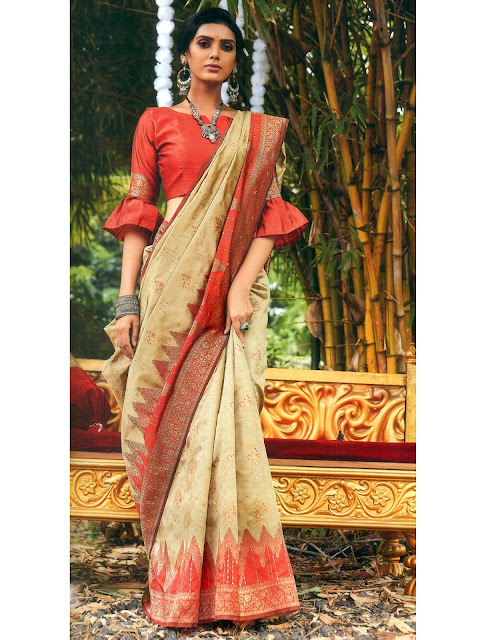India's Favorite Authentic Outfits - Bandhani Saree
About Bandhani Saree's Story:
The term 'Bandhani,' also known as Bandhej, is derived from the Sanskrit word 'bandha,' which means 'to bind,' and refers to a skill done mostly in Gujarat and Rajasthan. It is currently quite trendy in mainstream fashion. This tie-and-dye method goes back to the sixth century and was originally utilised by the Khatri community in Gujarat, India's rural districts. According to historians, the first Bandhani saree was worn in a royal marriage by Banabhatt's Harshacharita. Bandhani is an old kind of art. Indus Valley Civilization archives provide the first references to this practice of plucking the fabric with fingernails and tying it before dying.
Bandhani's testimony can be seen in Buddhist paintings at the famed Ajanta caves. Texts going back to the reign of Alexander the Great contain references to Indian Bandhani.
Which State Is The Home Of The Bandhani Silk Sarees
Bandhani art is highly renowned in places like Jamnagar in Gujarat and Rajasthan's Sikar, Bhilwara, Udaipur, Bikaner, and Ajmer. They manufacture turbans, dupattas, and bandhani sarees. The Hindu and Muslim populations of Kutch have historically dressed the bride during her wedding in bandhani textiles, which is seen to be fortunate.
Bandhani Sari from Rajasthan with Zari Weave on Border And All-Over
Which Colours Are Popularly Used In Bandhani Saree?
The cost of the cloth increases with the level of Bandhani sarees work. Natural colours are prevalent in Bandhani. Traditional Bandhani Saree’s hues include reds, maroon, ochre, orange, indigo blues, turquoise blue, and dark greens. Today, one may also come across hues like purple, black, beige, pink, and even mustard yellow. Because of its vibrant range of colours and elegant designs, it is one of the most cherished textiles in every woman's wardrobe.
Check This Out:
Bandhani Sari from Rajasthan with Zari Weave on Border And All-Over
Peacock-Green and Violet Bandhani Sari from Rajasthan with Zari Weave on Border
Source: www.exoticindiaart.com

Comments
Post a Comment